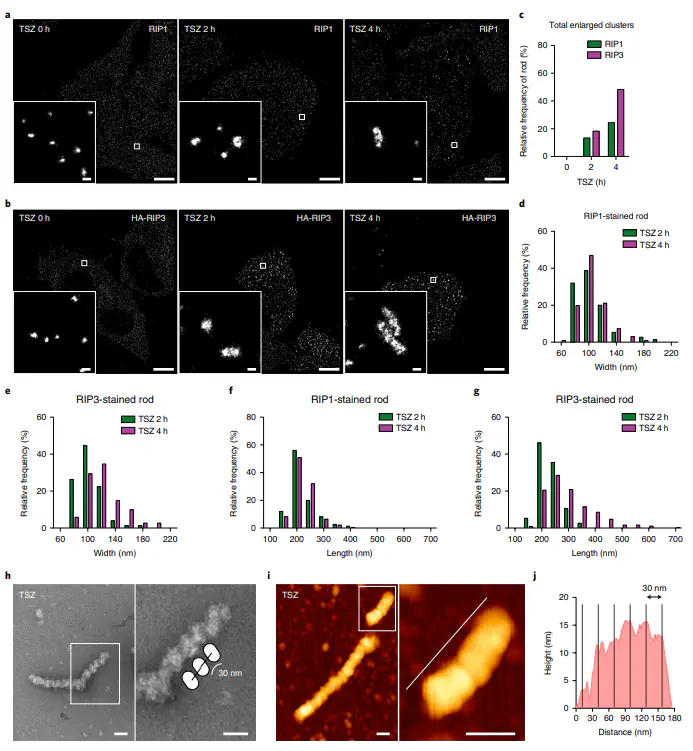
Abstract
RIP1 and RIP3, cell death mediators, form fibrous amyloids. How RIP1/RIP3 amyloidal oligomers assemble functional necrosomes and control cell death is largely unknown. Here we use super-resolution microscopy to directly visualize cellular necrosomes as mosaics of RIP1 and RIP3 oligomers. The small (initial) mosaic complexes are round, and the large mosaics are in a rod shape. RIP3 oligomers with sizes of tetramer or above are the domains in mosaics that allow MLKL, recruited by phosphorylated RIP3, to oligomerize for necroptosis. Unexpectedly, RIP1 autophosphorylation not only controls the ordered oligomerization of RIP1 but also is required for RIP1-initiated RIP3 homo-oligomerization in correct organization, which is indispensable for the formation of functional rod-shaped mosaics. Similarly, apoptosis initiated by enzymatically defective RIP3 requires the formation of rod-shaped mosaics of RIP3 and RIP1 oligomers. The revealing of nanoscale architecture of necrosomes here innovates our understanding of the structural and organizational basis of this signalling hub in cell death.